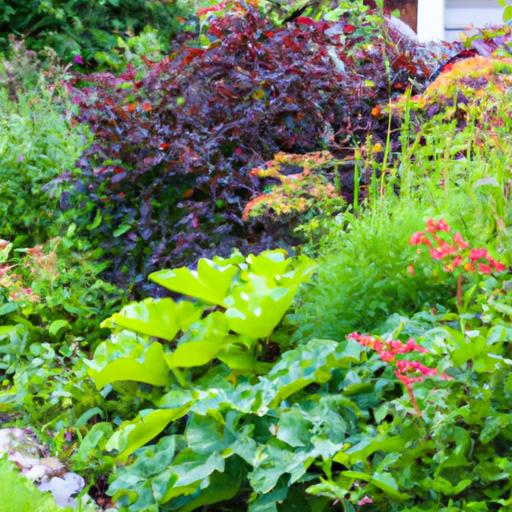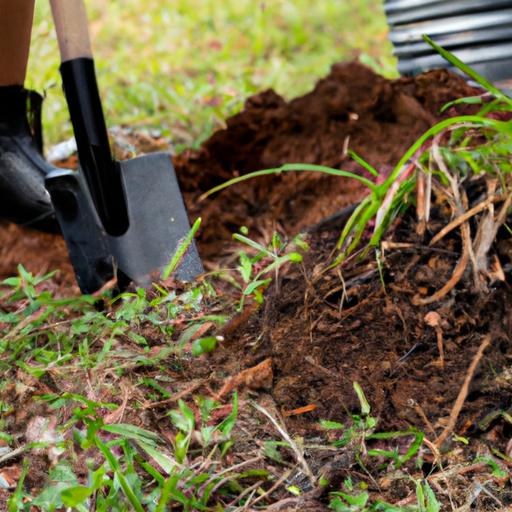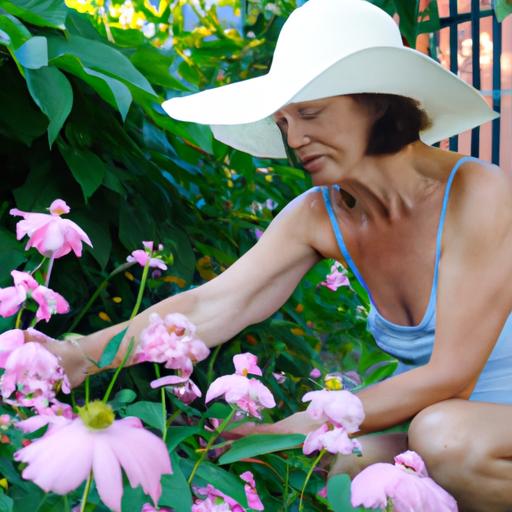Gardening and agriculture are two terms often used interchangeably, but are they truly synonymous? In this article, we will explore the relationship between gardening and agriculture and shed light on whether gardening can be considered a form of agriculture. Understanding the distinction between these practices is essential for anyone interested in sustainable living, food production, or simply nurturing a green thumb.
Defining Gardening and Agriculture
Let’s start by clarifying what gardening and agriculture entail. Gardening is the art and practice of cultivating and maintaining plants, typically in a smaller scale setting such as a backyard or a community garden. It involves activities like planting, weeding, watering, and harvesting. Gardening is not only a hobby but also a means of beautifying spaces and growing fresh produce for personal consumption.
On the other hand, agriculture encompasses a broader scope. It refers to the science, art, and business of cultivating land, raising livestock, and producing crops on a larger scale. Agriculture plays a vital role in feeding communities and sustaining economies. It involves various practices, techniques, and technologies to maximize productivity and ensure food security.
Exploring the Relationship
While gardening and agriculture have distinct characteristics, they are undoubtedly interconnected. Gardening can be seen as a subset of agriculture, focusing on smaller-scale plant cultivation. It serves as a stepping stone for individuals to learn and engage in agricultural practices. Moreover, many principles and techniques used in agriculture can be applied to gardening, such as soil preparation, pest control, and crop rotation.
The relationship between gardening and agriculture goes beyond technical aspects. Both practices share the common goal of harnessing the power of nature to provide sustenance and enhance our surroundings. They promote a deeper understanding of the natural world, fostering a sense of responsibility towards the environment and our own well-being.
The Significance of “is gardening agriculture?”
Understanding whether gardening is considered a form of agriculture is crucial for anyone interested in food production, sustainability, and self-sufficiency. By exploring this question, we can better comprehend the broader implications of our gardening efforts and connect them to the larger agricultural landscape. Whether you are a seasoned gardener or just starting, delving into the relationship between gardening and agriculture will enhance your knowledge and allow you to make informed decisions.
In the subsequent sections of this article, we will delve further into the nuances of gardening and agriculture, comparing their similarities and differences. We will explore how these practices interconnect and why their synergy is essential for a more sustainable future. So, let’s dig deeper and uncover the fascinating world where gardening meets agriculture.
Understanding Gardening
Explaining Gardening as a Practice
Gardening is more than just a pastime – it is a fulfilling practice that allows us to connect with nature and nurture the growth of plants. Whether it’s a small herb garden on a balcony or a sprawling flower bed in a backyard, gardening offers a sense of accomplishment and tranquility. It provides an opportunity to escape the chaos of daily life and find solace in the beauty of the natural world.
Key Components of Gardening
Cultivation lies at the heart of gardening. It involves preparing the soil, selecting suitable plants, and providing them with the necessary conditions for growth. From sowing seeds to transplanting seedlings, gardeners engage in the delicate process of fostering life. Maintenance is another crucial aspect, encompassing tasks like watering, weeding, and managing pests and diseases. Regular care ensures the health and vitality of the plants.
Harvesting is perhaps one of the most rewarding aspects of gardening. Being able to enjoy the fruits (or vegetables) of one’s labor is a delightful experience. The act of plucking ripe tomatoes, picking fragrant herbs, or gathering colorful flowers brings a sense of accomplishment and satisfaction. It also allows gardeners to appreciate the cycle of life and the abundance that nature provides.
Benefits of Gardening
Gardening offers a multitude of benefits, both for individuals and communities. On a personal level, it provides a productive outlet for creativity and self-expression. It can serve as a form of therapy, reducing stress and promoting mental well-being. Gardening also encourages physical activity, offering an enjoyable way to stay active and maintain a healthy lifestyle.
In communities, gardening plays a vital role in fostering social connections. Community gardens bring people together, creating spaces for shared experiences and knowledge exchange. They promote a sense of belonging and empower individuals to take charge of their food sources. Additionally, gardening contributes to environmental sustainability by reducing food miles and promoting biodiversity.
So, whether you’re nurturing a small plot of roses or tending to a bountiful vegetable garden, gardening offers a myriad of benefits that extend beyond the act itself. It provides a sanctuary for both the gardener and the surrounding ecosystem, making it a valuable practice for individuals and communities alike.
Understanding Agriculture
The Broad Concept of Agriculture
Agriculture encompasses a wide range of activities and practices that revolve around cultivating the land, rearing livestock, and producing crops. It is an essential pillar of our society, providing us with the food and resources necessary for sustenance. Agriculture extends beyond mere cultivation and is deeply intertwined with our economy, culture, and environment.
Forms of Agriculture
Within the realm of agriculture, various forms exist, each with its own unique characteristics and objectives. Commercial agriculture focuses on large-scale production to meet the demands of a broader market. This form often utilizes advanced technologies and mechanization to increase productivity and efficiency.
In contrast, subsistence agriculture concentrates on supplying the needs of a particular household or community. It is practiced primarily for personal consumption, with any surplus occasionally traded or sold locally. Subsistence agriculture plays a crucial role in regions where access to external food sources is limited.
Another form gaining prominence is organic farming. Organic agriculture prioritizes sustainable practices, avoiding the use of synthetic chemicals and genetically modified organisms. It emphasizes environmental stewardship, biodiversity, and the maintenance of healthy ecosystems.
Diverse Agricultural Practices
Crop cultivation is one of the fundamental agricultural practices, involving the deliberate planting, nurturing, and harvesting of various plants. This includes staple crops like rice, wheat, and maize, as well as specialty crops such as fruits, vegetables, and herbs. Each crop requires specific techniques and care to optimize growth and yield.
Livestock rearing is another integral aspect of agriculture, involving the raising and management of animals for meat, milk, eggs, and other products. Livestock farming includes cattle, poultry, swine, sheep, and goats, among others. Proper animal husbandry practices and welfare considerations are paramount in ensuring the health and productivity of the livestock.
Aquaculture, also known as fish farming, is an increasingly important branch of agriculture. It involves the cultivation of aquatic organisms such as fish, shellfish, and aquatic plants. Aquaculture serves as an alternative to traditional fishing methods and contributes to meeting the growing demand for seafood.
In the next section, we will explore the similarities and differences between gardening and agriculture, shedding light on how these practices intersect and complement each other. Let’s delve deeper into the intricate relationship between these two green endeavors.
Comparing Gardening and Agriculture
Similarities and Differences
When comparing gardening and agriculture, it is essential to identify both their similarities and differences. While they share common principles, techniques, and goals, certain factors set them apart.
Shared Principles, Techniques, and Goals
Gardening and agriculture both revolve around the cultivation of plants and the nurturing of the land. They rely on similar principles such as providing adequate sunlight, water, and nutrients to ensure healthy plant growth. Additionally, both practices employ techniques like composting, crop rotation, and pest control to maintain plant health and maximize yields.
Moreover, gardening and agriculture share common goals. They aim to produce food, beautify spaces, and promote environmental sustainability. Both practices provide an avenue for individuals to reconnect with nature, cultivate their own food, and contribute to a greener world.
Scale, Purpose, and Production Levels
While gardening and agriculture share many similarities, scale, purpose, and production levels distinguish them.
Scale: Gardening is typically carried out on a smaller scale, often in backyards, balconies, or community gardens. It allows individuals to grow a variety of plants for personal consumption and aesthetic pleasure. In contrast, agriculture operates on a larger scale, encompassing vast farmlands and commercial operations that feed communities and contribute to the global food supply.
Purpose: Gardening is often pursued as a hobby or a means of self-sufficiency. It provides individuals with the opportunity to grow fresh produce, cultivate medicinal plants, or create ornamental gardens. Conversely, agriculture focuses primarily on commercial production, providing a steady supply of food, fiber, and other agricultural products to meet the demands of a growing population.
Production Levels: In terms of production levels, gardening typically yields smaller quantities of crops, sufficient for personal consumption or local sharing. Agriculture, on the other hand, employs advanced technologies, machinery, and large-scale operations to achieve higher yields and meet the demands of a broader market.
Understanding these distinguishing factors between gardening and agriculture allows us to appreciate the unique contributions and potential of each practice. While gardening can serve as a stepping stone towards agriculture, it also holds intrinsic value in promoting self-sufficiency, community engagement, and environmental stewardship.
In the next section, we will delve deeper into the interconnection between gardening and agriculture, exploring how these practices overlap and complement each other in our quest for a sustainable future.
The Interconnection between Gardening and Agriculture
Overlapping and Complementary Practices
Gardening and agriculture, despite their distinct scales and scopes, share a strong interconnection. They are not mutually exclusive but rather complement each other in various ways. Both practices rely on fundamental principles of plant cultivation, soil management, and pest control. Techniques used in gardening, such as companion planting or organic fertilization, often find their roots in agricultural practices. Similarly, advancements in agricultural research and technology trickle down to benefit gardeners, enabling them to enhance their own cultivation methods.
Gardening as a Gateway to Agriculture
Gardening can serve as a valuable gateway to agriculture, offering individuals a hands-on experience and an opportunity to develop essential skills. It provides a stepping stone for aspiring farmers, allowing them to understand the basics of plant care, observe the seasonal cycles, and learn about the interplay of environmental factors. Through gardening, one can gain insights into the challenges and rewards of agricultural practices, fostering a deeper appreciation for the complexities involved.
Agriculture’s Role in Food Production and Global Challenges
Agriculture plays a crucial role in sustaining food production and addressing pressing global challenges. As the world’s population continues to grow, the demand for food increases exponentially. Agriculture, with its large-scale production capabilities, is responsible for meeting this demand. By implementing efficient farming methods, leveraging technology, and optimizing resource allocation, agriculture ensures food security for communities worldwide.
Moreover, agriculture holds the key to addressing broader challenges such as climate change and environmental degradation. Sustainable agricultural practices, such as precision farming and organic cultivation, minimize the ecological footprint and promote biodiversity conservation. By adopting responsible agricultural approaches, we can mitigate the negative impacts of food production and preserve our natural resources for future generations.
In conclusion, the interconnection between gardening and agriculture is undeniable. While gardening serves as a gateway to agriculture, providing invaluable knowledge and experience, agriculture sustains food production and tackles global challenges. Recognizing the overlap and complementarity of these practices empowers individuals to make informed choices, contributing to a more sustainable and resilient future. So, whether you tend to a small garden or dream of cultivating vast fields, embracing the interplay between gardening and agriculture will enrich your journey and positively impact our world.
Conclusion
In conclusion, gardening and agriculture are closely intertwined but have distinct characteristics that set them apart. Gardening can be seen as a subset of agriculture, focusing on smaller-scale plant cultivation in personal or community spaces. It serves as a gateway for individuals to learn and engage in agricultural practices.
While gardening and agriculture share similarities in principles and techniques, such as soil preparation and pest control, they differ in scale, purpose, and production levels. Agriculture encompasses a broader scope, involving large-scale crop cultivation, livestock rearing, and other forms of agricultural practices.
Understanding the relationship between gardening and agriculture is crucial for anyone interested in sustainable living, food production, and self-sufficiency. Gardening provides individuals with the opportunity to connect with nature, nurture their surroundings, and grow their own fresh produce. Agriculture, on the other hand, plays a vital role in feeding communities and sustaining economies on a larger scale.
By delving into the question “Is gardening agriculture?” we gain a deeper understanding of the interconnectedness between these practices. Gardening serves as a stepping stone towards agriculture, allowing individuals to develop their skills and knowledge in cultivating plants. Agriculture, in turn, ensures food production and addresses global challenges related to food security.
In our journey through this article, we have explored the definitions of gardening and agriculture, examined their relationship, and highlighted the significance of understanding this connection. Both gardening and agriculture play crucial roles in promoting sustainable living, fostering a sense of responsibility towards the environment, and enhancing our well-being.
So, whether you find joy in tending to a small garden or envision a future in agriculture, remember that both practices contribute to a greener, more sustainable world. Embrace the art of gardening, appreciate the impact of agriculture, and let nature’s bounties flourish in your hands.




